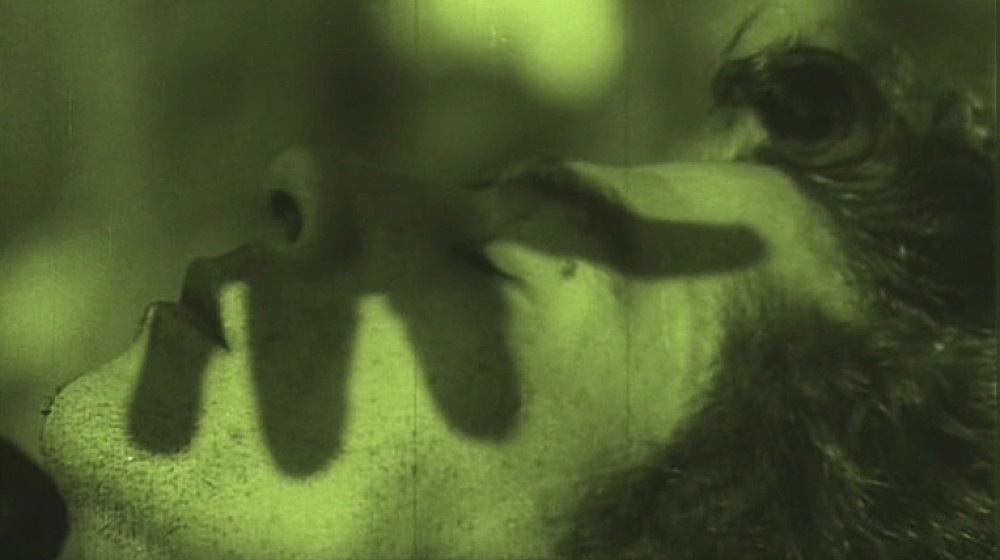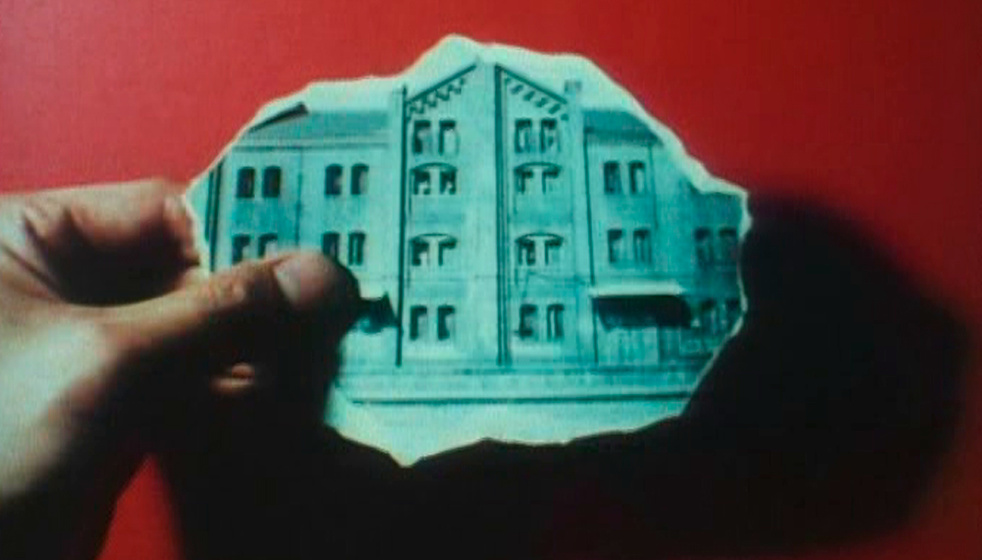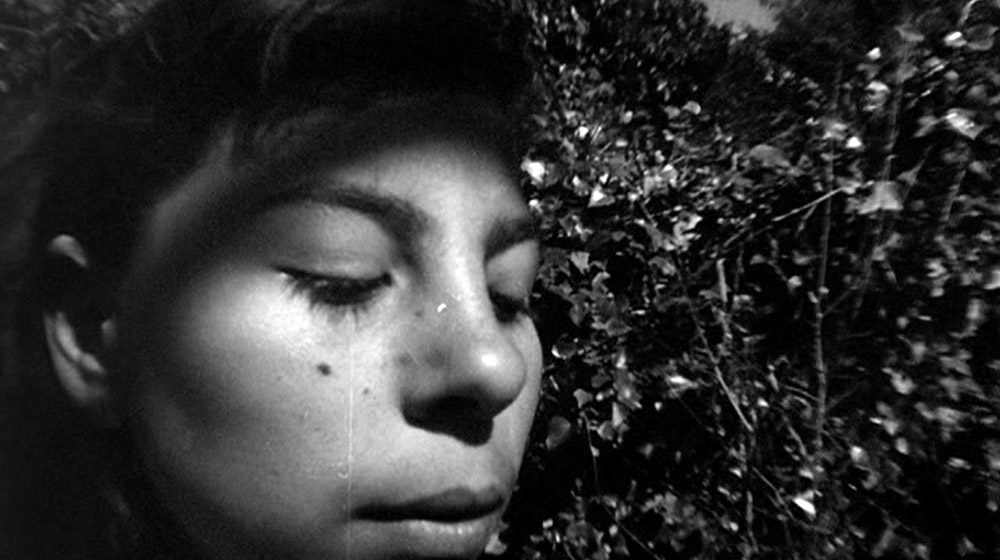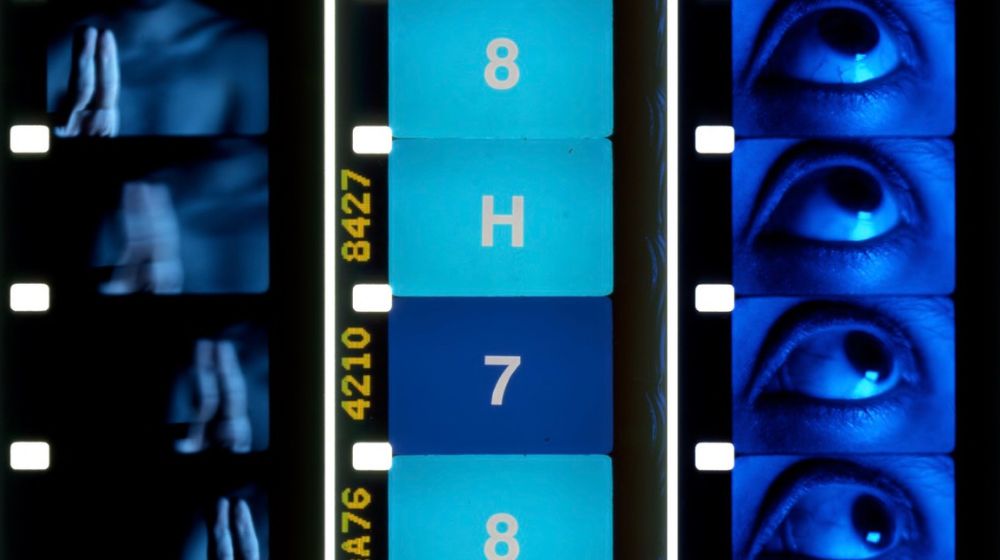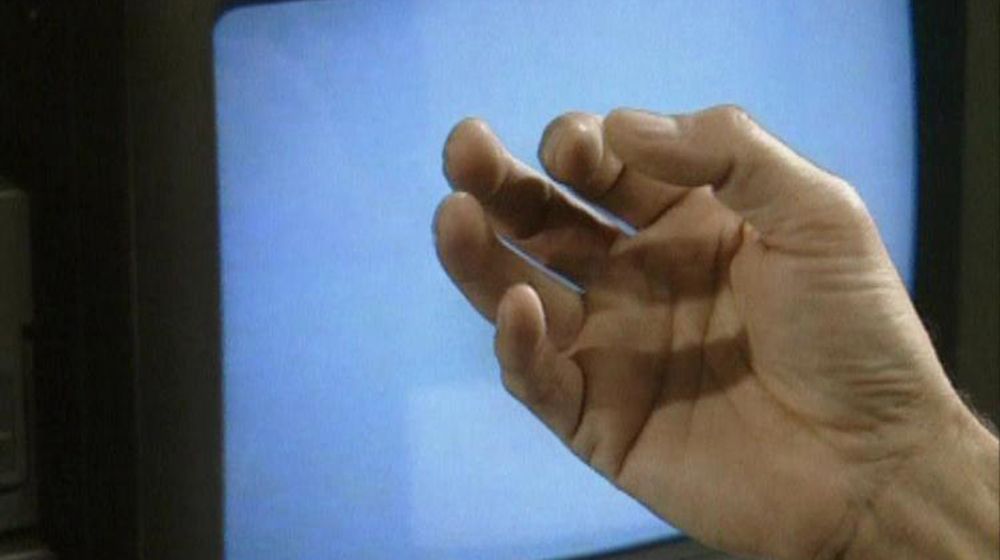Many eyes, Many centers, Moving, Maria Pipla, Spain, 2022, 3'
Can a gesture unite body and machine? The 16mm reel of a Bolex camera is thirty metres long, equivalent to about three minutes of footage. A movement of hands is stretched out over these three minutes in a silent choreography without any fixed rhythm, in which the only subject is the body itself and time, brought together in a gesture.
On the one hand, Film ist 3 explores the scientific images produced as a means of dissecting emotions. Human beings become the object of their own entomology, where feelings are measurable and quantifiable: heart rate, pupil dilation, contractions of the alveoli. On the other hand, Film ist 11 examines the cinema of origins, exploring the repetition of gestures as a way of codifying human behaviour. Science and narrative, face to face, in their eagerness to catalogue and order the countless feelings that define the human experience.
Aguaespejo granadino, José Val del Omar, Spain, 1955, 23'
Granada, the birthplace of García Lorca and also of José Val del Omar. The landscapes, sounds (flamenco!) and faces that nourished Lorca's poetry make up the raw material of Aguaespejo granadino. Combining his two facets of filmmaker and inventor, Val del Omar seeks out things where they’re at their purest, a technique placed at the service of ecstasy, fusing the material with the spiritual, the popular with the universal and the ancestral with the visionary.
In 2000, the Cannes Festival commissioned Jean-Luc Godard to create a short commemorating cinema as it entered its second century. However, Godard and
Miéville chose to look back, like Walter Benjamin's Angelus Novus, contemplating the devastation of 20th-century images. A century of cinema but also a century of barbarism unleashed on an unprecedented scale; a century of revolutions, some victorious, few lasting; a century of Hollywood and Godard's own cinema. A lament for the brevity of innocence, like the trees caressing the face of the deceased Vasyl in Dovzhenko's Earth, and for the continuation of barbarism in the new millennium.
Mutiny, Abigail Child, United States, 1982, 10'
The central image, a woman in an office intervening in the space with her spasmodic movements, is woven into a kaleidoscope of suspended, diverted and repeated gestures, reused from the filmmaker's earlier films, which Abigail Child allows to meet (and riot together!) before the viewer, opening up the possibility for film editing to choreograph the dispersed.
Anticipation of the Night, Stan Brakhage, United States, 1958, 40'
Imagine a world before the 'beginning was the word’
Light interrupted by the shadow of an adult crossing the threshold of a door. A night-time car journey, in the back seat, the moon and streetlights vibrating with every bump. Delight mixed with vertigo the first time at an amusement park. Is it possible to see the world again like a child?
How many colors are there in a field of grass to the crawling baby unaware of ‘Green'?
Stan Brakhage believed the invention of cinema was an opportunity to see the world afresh, for the very first time; every gesture, shape and colour freed from the burden of language and memory.
All that is necessary is to see—see!—see as if sight had just been born
A program by Marc Torres
